Blepharitis Signs
The most common sign is a persistent, redness and scaliness of the skin on and around the eyelid margins. Other problems may include:
- Persistent soreness of the eyelids or eyes
- The greasy appearance of the eyelid margins
- Flakes of skin like dandruff
- Madarosis (Increased loss of eyelashes)
- Small ulcers on the eyelid
- Crusting and bleeding (if severe)
- Irritation of the eye (from flakes)
- Foreign body sensation in the eye
- Grittiness, burning, itching, and dryness
- Discharge from the lids, causing lashes to glue together during sleep
- Sensitivity to light ( especially the morning hours )
- Swelling of the eyelids and conjunctiva
- Cylindrical dandruff around the eyelash
The Exact Cause of Blepharitis
The exact cause of blepharitis is not clear.
It may be associated with one or more factors, including:
- Seborrheic dermatitis — dandruff of the scalp and eyebrows
- Excess growth of bacteria
- Blocked or malfunctioning meibomian glands in your eyelids ( Meibomian Gland Dysfunction )
- Allergies, including allergic reactions to eye medications, contact lens solutions or eye makeup
- Eyelash mites (check our new article on Demodex) or lice
- Rosacea or acne rosacea ( a chronic skin disease that is characterized by facial redness )
- Malfunctioning of the meibomian eyelid oil glands
The excess growth of bacteria found on the skin is the most common cause of blepharitis. In this case, the bacteria’s products will create scales, or dandruff-like particles, to form along the base of the eyelashes. Debris can block oil glands (MGD) and increase blepharitis symptoms.
Blepharitis is more common in older people, but it can emerge at any age. As you get older, the glands in your eyelids that secrete part of your tears become blocked more easily. Your tears contain fewer lubricants and your eyes can feel gritty and dry, so seborrhoeic blepharitis and MGD tend to happen more in older people.
Complications
Blepharitis is rarely accused of serious complications.
The most common complaint of blepharitis sufferers is that they are unable to wear contact lenses when they are suffering from an episode of blepharitis. Although annoying, this can usually be solved by wearing glasses instead of contact lenses until the symptoms diminish.
Conjunctivitis
The membrane which covers the inner surface of the eyelids and the white part of the eyes is called conjunctiva. Inflammation of the conjunctiva is commonly known as conjunctivitis.
Conjunctivitis is caused by bacteria in the eyelids affecting the eyes. Conjunctivitis is not usually serious and shouldn’t affect vision.
The complaint normally lasts for about fourteen days and will clear up without the need for treatment. More persistent episodes may be treated by antibiotic eye-drops.
Styes
A stye is a painful swelling that develops on the outside of the eyelid, producing pus. They are caused by a bacterial infection of the base of the eyelash (where it attaches to the eyelid)
Most styes can be treated simply with the application of a cloth that has been warmed with hot water. More serious styes can be treated with antibiotic medication in the form of either cream or tablets.
Dry Eye Syndrome
This is a common complication of blepharitis, caused by eyes being unable to make enough tears, or the tears evaporating too quickly to provide moisture for the eye. Dry eye syndrome is also known as keratoconjunctivitis sicca. As a result of dry eye syndrome, your eyes can dry out as well as becoming swollen and irritated.
The cause of dry eye syndrome may be a skin complaint which has led to blepharitis. Common skin complaints causing blepharitis are rosacea and seborrhoeic dermatitis.
Dry eye symptoms include:
- Dryness of the eyes and a feeling of grittines which worsens throughout the day.
- Eyes that water excessively – especially when exposed to wind.
Dry eye syndrome symptoms can normally be treated by eye drops that are designed to impersonate tear properties. They are also known as tear substitutes. If you’re suffering from dry eye syndrome you do not need a prescription to buy over the counter tear substitutes.
Meibomian Cyst
The Meibomian glands are situated on the inside of your eyelid and produce a fatty substance that protects the eyes. Blepharitis can cause inflammation to the Meibomian glands which result in swelling, commonly called a Meibomian cyst.
These cysts are normally painless and will go away without treatment. They can be reduced by applying a hot compress, but if a cyst becomes infected it will need treating with antibiotics. If the cyst does not disappear it can be removed with a straightforward surgical procedure.
Examination
The optometric physician takes several steps in determining the precise diagnosis. The doctor performs a careful eye blepharitis examination, starting with the gross observation of the face.

The physician looks for facial redness, papules, pustules, and telangiectasia (dilated small blood vessels), such as those found in rosacea. The doctor will look for any signs of rhinophyma (enlarged nose), particularly if a male patient has rosacea. Rosacea is a common condition affecting approximately 14 percent of women and approximately 6 percent of men. Rosacea can also be found in children, but the signs are subtle and often overlooked.
The slit-lamp biomicroscopic exam is imperative, providing various magnifications. Slit-lamp examinations aim to detect any eyelid inflammation and evaluate the width of the palpebral fissure. The doctor will carefully evaluate the lashes for crustiness and madarosis (loss of lashes). Cylindrical dandruff around the eyelash is associated with Demodex Folliculorum mites, which is linked to blepharitis. The doctor will examine the cornea, the bulbar and tarsal conjunctiva for signs of scarring, inflammation or infection. The quantity and quality of the patient’s tears must be evaluated, and the doctor must measure the lower tear meniscus height and look for evidence of tear film debris.
Advanced examination methods :
- Instilling fluorescein dye: A specialized dye instilled into on the surface of the eye. Then with the use of blue light , the doctor easily detects foreign objects and any damage to the cornea.
- Tear Film Break-Up Time (TFBUT): As before a dye is instilled into the eye. Then, TFBUT measures the time of the creation of first dry spots after a blink. This helps in determining the tear quality and surface dryness. Any value of fewer than 10 seconds is considered cautious.
Treatments
There is no one-off cure for blepharitis, as the inflammation tends to recur if you do not keep up with treatment. However, with regular treatment, symptoms can usually be eased and then kept to a minimum. This helps to prevent flare-ups. The aim of treatment is to control or manage blepharitis, not to cure it. Most of the treatment is done by you, rather than having prescriptions or treatments from your doctor. The main treatment is regular eyelid hygiene. Other treatments that may be needed include antibiotics, artificial tear drops and specific treatment for associated conditions.
Regular Eyelid Hygiene
Eyelid hygiene is the most important part of blepharitis treatment. The aim is to soothe the eyelids, unplug any blocked meibomian glands and clear out any stagnant oily secretions from these glands. The eyelids are cleaned and debris is removed. This is a daily routine that consists of three parts – warmth, massage, and cleansing. Remove any contact lenses before following the routine.
Warmth
The purpose of warmth is to soften the skin and any crusts attached to the eyelids. It also allows the oily secretions made by the meibomian glands to flow more freely, as warmth makes oils runnier. Therefore, warmth helps to unplug any blocked glands and allow the oily secretions to flow more readily. Warmth applied to the eyelids for five to ten minutes is sufficient to do this.
The traditional method is to press on the eyelids gently with a flannel (facecloth) soaked in very warm water for 5-10 minutes. If the flannel cools, keep re-warming it in the warm water.
A popular alternative is to use a specially designed reusable heat bags or masks which you place over your eyes for about five minutes. There are a number of such eye bags available but Oasis REST & RELIEF Eye Mask, is one of the best. The oasis eye mask is made of excellent quality materials, warms well, the band around the head is easily adjustable. The heat bags are warmed in a microwave. The advantage of a heat bag over a hot flannel is that the heat is retained for many minutes and so it keeps a constant warmth over the eyes. You can simply lie down and relax for five to ten minutes with the bag placed over your eyes.
No products found.
Massage
Massage the eyelids immediately after applying the warmth. Massaging helps to push out the oily fluid from the tiny meibomian glands. To massage the eyelids:
- Massage along the length of the upper and lower eyelids towards the eye. That is, sweeping downwards when moving along the upper eyelid, and upwards when moving along the lower eyelid. The idea is that you are moving the oily secretions toward the edge of the eyelid so that they can come out of the glands.
- Repeat this massage action 5 to 10 times over about 30 seconds immediately following the warming.
- Massaging should neither to be too gentle nor too firm. It should be relatively comfortable and you should not press hard enough to actually hurt your eyeball under the closed lids.
- Always massage with the eyes shut.
Clean
After warmth and massage, clean the eyelids. This can be done by any of the following ways. There is a lack of research studies to say which is the best method, so use whatever you find most useful:
- The traditional way is to use a cotton wool bud that has been dipped in diluted baby shampoo. Just add a few drops of baby shampoo to a small cup of warm water so that the ratio of water to shampoo is about 10:1. Squeeze out excess liquid from the cotton bud to prevent drips from getting into your eyes, which may irritate. In particular, try to clean off any crusts at the base of the eyelids. After cleaning the eyelids with the cotton wool bud, wash off the shampoo from the eyelids, using a flannel or cloth.
- Some people recommend using sodium bicarbonate (a teaspoonful in a cup of cooled water that has recently been boiled). This is applied using a clean cloth or cotton wool bud. This may cause irritation to the eyes of some people.
- Some people recommend using special eyelid scrubs that you can buy at some opticians/optometrists. More information can be found in our article: Best Eyelid Wipes
- Some people say that simply washing the eyelids with cooled water that has recently been boiled (or preserved water for contact lens wearers) is probably as effective as using water with added sodium bicarbonate or baby shampoo.
- The best way to clean your eyes is by using a specialized eyelid cleanser. Blepharitis Wiki recommends buying OcuSoft eyelid cleanser which leaves the skin very hydrated and smooth. More information on the following link or click on the image: Ocusoft Lid Scrub Foaming Eyelid Cleanser. Close your eyes, clean and massage the skin over the eye area every morning for 30 seconds. This cleanser is great also for sensitive skin and it is super effective against blepharitis. I suggest removing the soap with water before opening your eyes even though it does not burn them.
No products found.
You should do the above routine – warmth, massage, clean – at least twice a day until symptoms settle. When the symptoms have eased, keep doing this routine once a day, every day, to prevent further flare-ups. If you are prone to blepharitis it is best to think of this as part of your daily routine – just like brushing your teeth. This is the best way to keep symptoms away, or to a minimum.
Artificial Teardrops
Blepharitis is often associated with dry eyes. This is because the tear film is produced by the meibomian glands. So if they are blocked or not working well, your eyes will not be as well lubricated. Therefore, artificial tear drops may help ease symptoms. These come as eye drops and gels. You can buy them at pharmacies or get them on prescription. You may need to use them regularly to keep symptoms away.
There are several types of artificial tear drops and gels with different ingredients. Occasionally, some people find one type may irritate. A change to a different preparation may help if the first does not suit.
Diet
There’s strong evidence that a diet high in omega-3 fats help improving blepharitis.
The best sources of omega-3s are oily fish, such as:
- mackerel
- salmon
- sardines
- herring
- fresh or frozen tuna (avoid canned )
Aim to eat at least two portions of fish a week, one of which should be oily fish.
Vegetarians or vegans can also get omega-3 from :
- flax seeds
- seaweed
- mustard oil
- berries
- black rice
- beans
- green vegetables ( cabbage, spinach, broccoli, etc. )
Alternatively, for high efficiency and quick result, there is the option to buy omega-3 supplements. Blepharitis Wiki strongly suggests the following link which it is considered one of the best in the world: Dr. Tobias Omega 3 Fish Oil Triple Strength .
No products found.
Antibiotic Blepharitis Treatments
Antibiotic eye ointment or drops may be advised for a while if an eyelid becomes infected. If you are prescribed ointment, place it on the edge of the eyelid (not the eye) after cleaning the eyelid in the way described above. You will normally need to use these drops for six weeks. Antibiotic tablets are also sometimes used for troublesome infected eyelids. Note: a three-month course of antibiotics is typically used in the treatment of blepharitis.
Extra Tips
- Avoid make-up, eyeliners contact lenses as they make symptoms worse
- Do not touch your eyes with anything dirty
- Avoid rubbing eyelids
- Drink enough water
- Change sleeping pillows and bed sheets more often
- Avoid alcohol and caffeine
- Treat head dandruff
Questions
What happens if I do not do anything?
The question is answered in the complications paragraph. The most common complication includes :
- Stye
- Chalazion
- Dry Eye
In general, Blepharitis will not go away. It may get worse and irritate the front surface of your eye. This could lead to discomfort and further infection.
Do the treatments have any side effects?
The main side-effects of the drops, ointments and other medication used to treat your eyes are an allergic reaction or irritation. These side-effects include:
- worsening redness
- worsening sore eyes
- increased itchy eyes
- impairment of vision.
The side-effects are similar to the symptoms of blepharitis. If you feel your symptoms are getting worse, please contact your nurse practitioner in the eye casualty department. Because a number of different medicines may be used in the treatment of your blepharitis, it is not possible to list all potential side-effects here.
References
http://blepharitistreatment.org.uk/blepharitis-complications/
http://www.kumc.edu/Documents/-ophthalmology/Blepharitis.pdf
Blepharitis Disease and Its Management By Rodolfo L. Rodriguez, O.D.
https://patient.info/health/blepharitis-leaflet

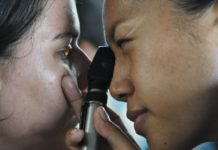
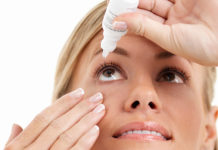


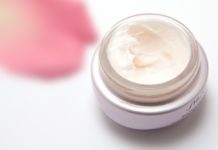
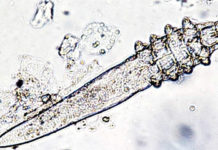

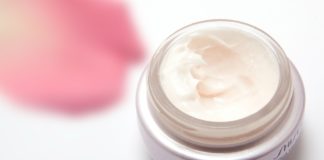



I am suffering from blepharitis. Thank you for these great suggestions, I’m very hopeful that they’ll help me.
Very comprehensive overview. You need a holistic approach to manage Blepharitis effectively, which this guide shows. Unfortunately there’s no silver bullet!